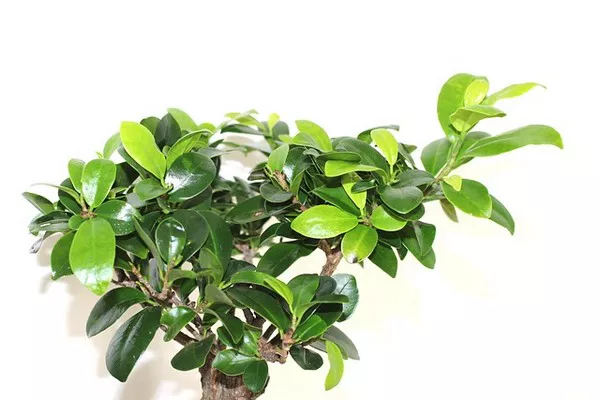Bonsai trees, with their delicate beauty and intricate forms, are cherished by enthusiasts worldwide. However, these miniature marvels are not immune to the threats posed by pests. Left unchecked, these pests can wreak havoc on your bonsai’s health and aesthetics. In this guide, we’ll delve into the identification, treatment, and prevention of common bonsai pests, ensuring your beloved tree thrives for years to come.
Identifying Common Bonsai Pests
Before implementing any treatment, it’s crucial to correctly identify the culprit plaguing your bonsai. Here are descriptions and images of some of the most common bonsai pests:
1. Aphids: These tiny, pear-shaped insects congregate on new growth, sucking sap from tender shoots. They can vary in color, from green to brown or black, and may leave behind a sticky residue known as honeydew.
2. Spider Mites: These minuscule arachnids are barely visible to the naked eye but leave telltale signs of their presence: fine webbing and stippled, yellowing foliage.
3. Mealybugs: Mealybugs appear as cottony masses along stems and leaf nodes. They feed on plant juices, weakening the bonsai and leaving it vulnerable to further damage.
4. Scale Insects: Scale insects come in two main varieties: soft and armored. Both types feed on plant sap and appear as small, waxy bumps on stems and leaves.
5. Caterpillars: While less common, caterpillars can occasionally infest bonsai trees, chewing on foliage and causing significant defoliation if left unchecked.
Organic and Chemical Treatment Options
Once you’ve identified the pest, it’s time to consider treatment options. Here’s a rundown of organic and chemical methods, along with their respective pros and cons:
1. Organic Options:
Insecticidal Soap: Made from natural, biodegradable ingredients, insecticidal soap is effective against soft-bodied pests like aphids and mealybugs. It works by suffocating the insects upon contact.
- Pros: Environmentally friendly, safe for beneficial insects, and easy to use.
- Cons: May require repeated applications for severe infestations.
Neem Oil: Derived from the neem tree, neem oil serves as a potent insecticide, repellent, and fungicide. It disrupts the pests’ hormonal balance, impeding their growth and reproduction.
- Pros: Offers residual protection, controls a wide range of pests, and has systemic properties.
- Cons: Can cause leaf burn if applied in direct sunlight, and its odor may be unpleasant to some.
Horticultural Oil: Similar to neem oil, horticultural oil suffocates pests by coating their bodies and disrupting their respiratory system. It’s particularly effective against scale insects.
- Pros: Safe for beneficial insects, reduces the risk of pesticide resistance, and can be used year-round.
- Cons: May cause phytotoxicity if applied in high temperatures, and can harm certain plant species.
Introducing Beneficial Insects: Predatory insects like ladybugs, lacewings, and predatory mites can help keep pest populations in check by feeding on them.
- Pros: Provides long-term pest control, reduces the need for chemical intervention, and promotes ecological balance.
- Cons: May not be practical for indoor bonsai or severe infestations.
2. Chemical Options:
Specific Insecticides: Various chemical insecticides are available for targeting specific pests, such as pyrethroids for aphids or miticides for spider mites.
- Pros: Fast-acting, highly effective, and readily available.
- Cons: Risk of harming beneficial insects, potential for pesticide resistance, and environmental concerns.
Step-by-Step Instructions for Treatment
Now that you’ve chosen a treatment method, here’s how to apply it effectively:
1. Prepare the Solution: Follow the manufacturer’s instructions to prepare the organic or chemical solution. Ensure proper dilution and use appropriate safety equipment, such as gloves and goggles.
2. Apply the Treatment: Use a spray bottle or pump sprayer to evenly coat the bonsai’s foliage and stems with the solution. Pay special attention to the undersides of leaves, where pests often hide.
3. Repeat as Needed: Depending on the severity of the infestation, you may need to repeat the treatment every 7-14 days until the pests are eradicated. Monitor the bonsai closely for signs of improvement.
4. Monitor for Adverse Effects: Keep an eye out for any adverse reactions, such as leaf burn or wilting, and adjust your treatment accordingly. If using chemical insecticides, adhere strictly to safety guidelines to minimize risks.
Prevention Tips
Prevention is key to maintaining a healthy bonsai ecosystem. Here are some tips to ward off future infestations:
1. Regular Inspection: Routinely inspect your bonsai for signs of pests, such as discolored foliage, distorted growth, or unusual webbing.
2. Maintain Proper Humidity and Airflow: Adequate airflow and humidity levels discourage pest proliferation and promote overall bonsai health. Consider using a humidity tray or misting the foliage regularly.
3. Ensure the Tree’s Overall Health: A strong, vigorous bonsai is better equipped to fend off pests and withstand environmental stressors. Provide proper nutrition, watering, and light levels to optimize its health.
4. Practice Good Quarantine Measures: Before introducing a new bonsai into your collection, quarantine it for a few weeks to prevent the spread of pests to existing trees.
Conclusion
By following these guidelines for identification, treatment, and prevention, you can effectively combat bonsai pests and safeguard the beauty and vitality of your cherished trees. Remember to approach pest management with patience and diligence, and your bonsai will thrive for years to come.


